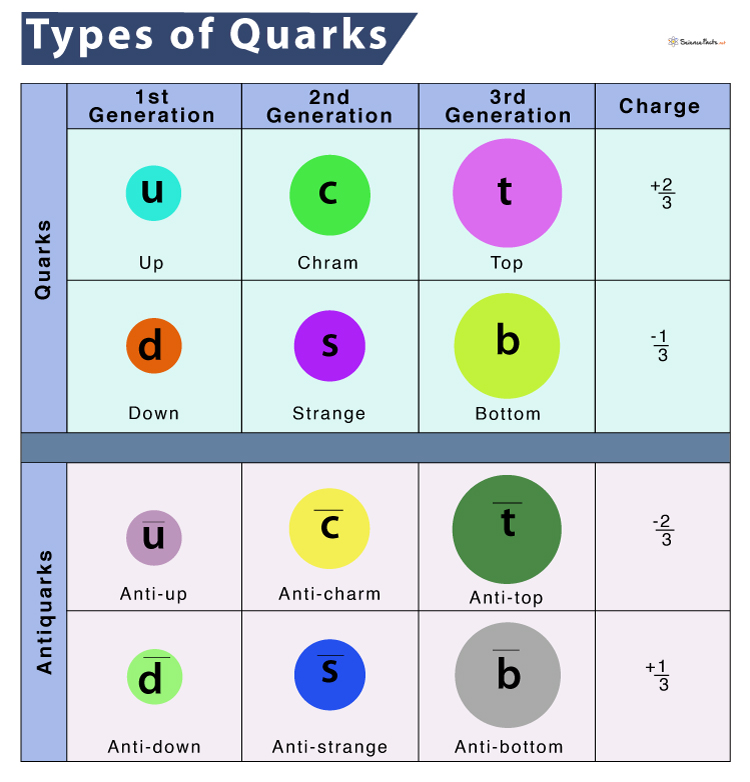What are Quarks
How were Quarks Discovered
Types and Charges of Quarks in an Atom
Later, Murray Gell-Mann named these unusual particles quarks’ influenced by the James Joyce novel ‘Finnegans Wake’. Each proton and neutron contain three quarks; however, they are of two types. Each up quark contains a charge of +2/3. In contrast, each down quark has a charge of -1/3. The sum of the quark charges making up a nuclear particle gives its electrical charge.
A proton includes two up quarks and one down quark. Thus it has a total charge of +1.
+2/3 +2/3 -1/3 = +1
A neutron includes one up quark and two down quarks, thus with a total charge of 0.
+2/3 -1/3 -1/3 = 0 Strange quarks had charge −1/3e occur as components of K mesons and various other highly short-lived subatomic particles. All quarks have a baryon number (B = 1/3) and a lepton number (L = 0). There is an antiparticle known as an antiquark for every quark flavor. It has equal magnitude but different electric charges and opposite signs. The flavor also determines other unique properties, such as a quark’s mass, spin, and parity, which are impossible to measure directly. It is because quarks are not observed independently but combined with other quarks. This property is called ‘quark confinement. The following table outlines each of the different flavors of quarks and their properties: The quarks and antiquarks in an atom are divided into three (first, second, and third) generations as shown in the diagram below with their charges. Ans. In particle physics, preons are point particles found as sub-components of quarks and leptons

